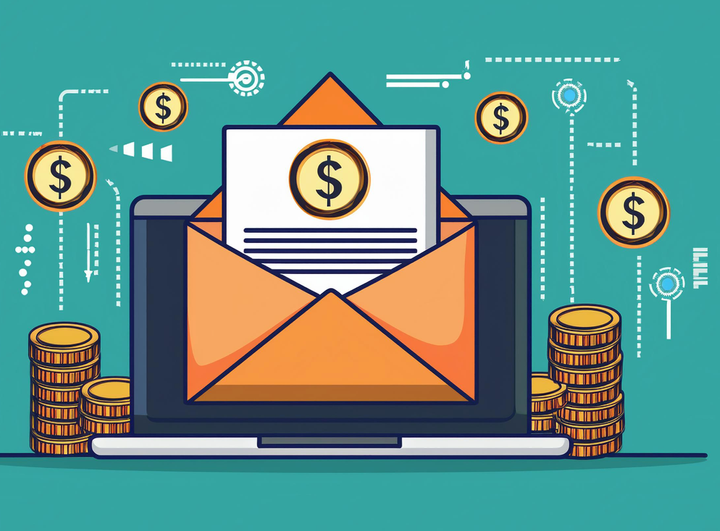Tips for creating a professional and effective email signature
Email has become a cornerstone of professional communication in today’s digital age. Whether you send messages to colleagues, clients, or potential employers, your email signature is often the final impression you leave. It’s more than just a sign-off; it reflects your professionalism and attention to detail. In this blog, we’ll delve into seven valuable tips for creating a professional and effective email signature that leaves a lasting positive impression.
1. Keep It Simple and Consistent
Imagine your email signature as your digital handshake. You wouldn’t greet someone with a handshake that’s overly complicated, right? The same principle applies here. A simple and clean email signature is like a warm, welcoming smile. It makes your recipients feel at ease.
When you keep your signature straightforward, including only the most essential details like your name, title, company, and contact info, you’re actually respecting your recipients’ time and attention. Remember, less can be more in this case.
Consistency is your trusty sidekick in the branding game. Think of it as your personal style; you wouldn’t wear mismatched clothes to an important meeting, would you? So, make sure your email signature’s fonts, colours, and layout align with your overall branding. Consistency reinforces your professional identity, making it easier for people to remember and recognize you.
2. Choose the Right Font and Size
Selecting the right font for your email signature is like choosing the right words to say in a conversation. It sets the tone. You want a font that’s friendly, easy to read, and universally available. Stick to the classics – fonts like Arial, Helvetica, or Times New Roman. They’re like the white button-up shirt of fonts: reliable and versatile.
As for font size, it’s all about making sure your message comes across clearly. Think of it as adjusting your voice volume to suit the setting. Aim for a font size between 10 and 12 points to ensure your signature remains readable on various devices. After all, you want your recipients to easily digest the information, right?
3. Add a Professional Photo
Including a professional photo in your email signature is like putting a face to a name during a conversation. It humanizes your emails and makes you more relatable. People like connecting with real humans, not faceless entities.
When choosing a photo, think of it as selecting your outfit for a big event. You’d choose something smart and presentable, right? Opt for a high-quality headshot where you appear friendly and approachable. Avoid heavily edited or overly casual images; they can send the wrong message. Your photo should be a reflection of your professional self. Moreover, if you are a company or business, using a high-quality logo is also important and will play a crucial role in helping your brand’s professionalism.
4. Include Relevant Contact Information
Your email signature isn’t just about looking good; it’s also about making it easy for people to reach out to you. It’s like having your business card handy at all times. Alongside your email address, consider including your phone number and, if applicable, your office address. These extra details can be a lifesaver when someone needs to contact you urgently or set up a meeting.
And don’t forget about the digital networking game. Including links to your professional social media profiles, like LinkedIn or Twitter, can open doors to new connections and opportunities. After all, networking isn’t just about shaking hands; it’s about expanding your digital reach too.
5. Use Hyperlinks Wisely
Hyperlinks in your email signature are like road signs. They should guide your recipients to relevant destinations. Include links that matter, like one to your company’s website or your LinkedIn profile. These links can provide recipients with more context about you and your work.
But here’s the trick: Make your links descriptive. Instead of showing the full URL (e.g., “https://www.linkedin.com/in/yourname”), use text that tells recipients where the link leads (e.g., “LinkedIn Profile”). It’s like providing clear directions in a conversation, making it easy for people to follow your path.
6. Consider Adding a Professional Quote or Tagline
Think of a quote or tagline in your email signature as a conversation starter. It can add a personal touch and convey your professional philosophy. However, like any good conversation starter, it should be concise and relevant.
Imagine your quote as a well-timed joke during a serious discussion. It should enhance the conversation, not overshadow it. So, pick a quote or tagline that aligns with your industry or personal values. Keep it short and sweet, like a memorable catchphrase.
7. Mobile Optimization
In our mobile-driven world, optimizing your email signature for mobile devices is like making sure you’re heard clearly on a phone call. Many people check their emails on smartphones and tablets, so a poorly designed signature can lead to a frustrating experience.
Test your email signature on various mobile devices and email apps. It’s like trying out different conversation styles with different people. Ensure that your signature appears clear and readable, whether in portrait or landscape orientation. Pay attention to details like font size, image expansion and scaling, and link spacing. A well-optimized signature ensures that your professionalism shines through, no matter where your recipients read their emails.
By following these tips, you can create an email signature that not only looks professional but also enhances your communication, leaving a positive impression on recipients and reinforcing your brand image. Remember, your email signature is like your digital first impression – make it count!



